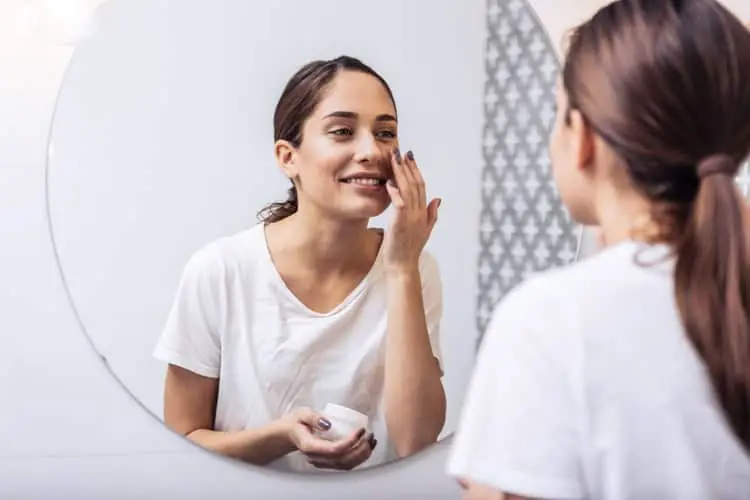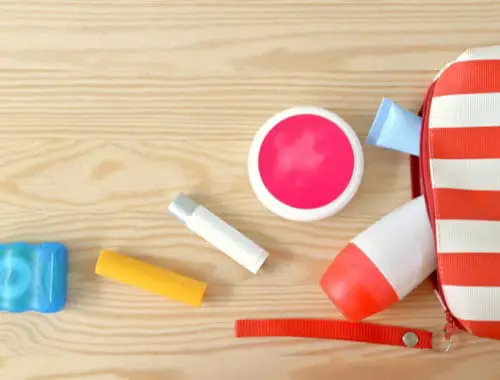Healthy, happy skin starts with a clean, simple and effective skin care routine. But with all the products and routines out there, how do you start to build a great skin care regimen? What works and what doesn’t? What order should each product be used in? How do you address different skin issues?
Here, we will go through a simple three step routine that provides the building blocks for a comprehensive plan that can be tailored to your unique skin.
An excellent skin care routine or regimen includes the following three basic steps, which can be done both in the morning and evening.
- Cleanse to remove impurities.
- Treat to troubleshoot specific skin issues that you want to work on.
- Protect to enhance your skin’s innate ability to maintain itself.
Important note: Products marked by a * are not generally endorsed by dermatologists, as they have no proven benefits to the skin. However, they are included here for the sake of completeness. And of course, all skin regimens should be approved by a board certified dermatologist to make sure it fits your unique skin.
AM Routine
In the morning, a routine can include, in this order:
Cleanse
- Cleanser → Non-comedogenic (non-clogging) cleansers remove impurities and oil on the skin
- Toner* aka exfoliator → Toners include alpha (glycolic, lactic, citric) and beta hydroxy acid (salicylic) based products that exfoliate dead skin cells. Exfoliating the skin is useful for patients with oily skin or tone issues, but should be avoided in those with sensitive skin.
Treat
Certain treatments are best performed in the morning.
- Acne treatments → Morning is a great time to use acne treatments such as benzoyl peroxide. This will also avoid deactivation of your nighttime retinoid by benzoyl peroxide.
- Serums → Vitamin C serum is best used in the morning, as the antioxidant effect can protect your skin all day from free radicals that damage your skin. AHA/BHA serums are also preferentially used in the morning to avoid irritation with nighttime retinoid use. Hyaluronic acid, peptides, or other vitamin serums can be applied in the morning or evening.
Protect
- Moisturizer & Sunscreen → Protecting the skin with moisturizer and sunscreen can prevent photoaging and skin damage. Sunscreen and moisturizer can be used as a combined product, or if separate, with moisturizer first and then sunscreen on top.
PM Routine
In the evening, a routine can include, in this order:
Cleanse
- Cleanser → An evening cleanser should remove makeup and cleanse the skin. Micellar water or dedicated makeup removing pads can be used and followed by a general cleanser.
Treat
The evening is a good time to apply treatments as they can soak into the skin overnight. Using products in the right order matters and should be used as follows:
- Retinoids → This should be the first product applied to clean skin. Retinoids exfoliate, remove oil, reverse photo-aging and normalize tone.
- Serums → This can be placed after the retinoid to coat the skin and rejuvenate overnight. Excellent serum ingredients include hyaluronic acid for skin volume restoration, and hydroquinone for tone correction.
- *Face masks → Masks can hydrate, occlude the above ingredients to enhance penetration, or exfoliate.
Protect
- Eye cream* → If you choose to use eye cream, it can be gently applied before general moisturizer.
- Moisturizer → Protecting with skin with cream based moisturizer overnight can help to heal the skin from daily photodamage and from excessive exfoliation and irritation from the above treatments. An excellent overnight moisturizer can include niacinamide, ceramide, and other healing agents.
- Face oils* → Face oils are useful for extremely dry skin and can be used instead of cream based moisturizers.
So the three basic steps of skin care are to cleanse, treat, and protect. Consistent use with these three steps will result in healthy, happy skin. Every step can be tailored to your unique skin and its needs.
Here are links to some great skin care routines that include what to use, how to use them, and most importantly, when and in what order to use products for maximum benefit.
The New York Times Magazine has a great skin care guide that is very comprehensive and detailed:
https://www.nytimes.com/guides/tmagazine/skincare-routine
WebMD has a nice slideshow that breaks down skin care routines by skin type:
https://www.webmd.com/beauty/glowing-skin-18/slideshow-skincare-routine
L’Oreal organizes skin care routines by twice daily, daily, weekly, and monthly.










